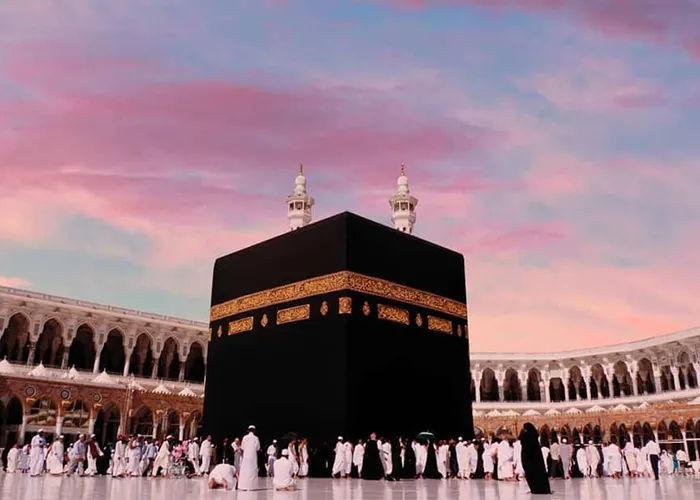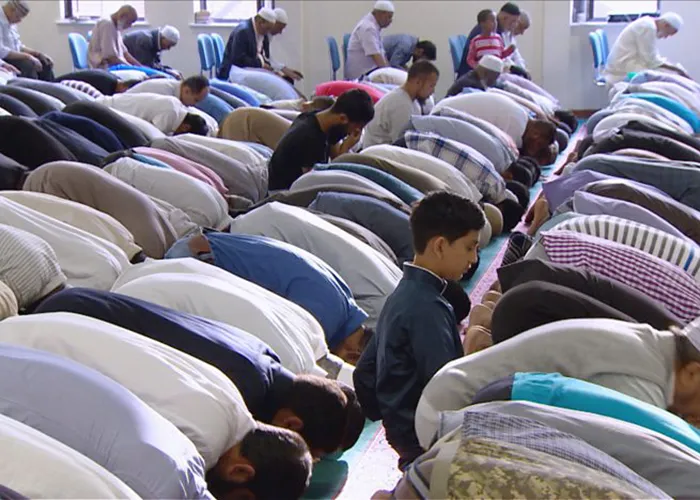Religious-Inquiries – Volume02 Issue18
Comparative Fiqh: The Direction of Prayer (Qibla) According to Imam Khamenei, Ayatollah Sistani, and Ayatollah Makarem Shirazi
Introduction
In Islamic jurisprudence, facing the Ka‘bah in Makkah—referred to as the qibla—is a foundational condition of ṣalāh (prayer). While the obligation is universally accepted among scholars, the detailed rulings on determining and adhering to the qibla vary between leading marājiʿ (religious authorities). This article compares the opinions of three of the most widely followed Shia marājiʿ: Imam Sayyid Ali Khamenei, Ayatollah Sayyid Ali al-Sistani, and Ayatollah Naser Makarem Shirazi. It aims to highlight their jurisprudential nuances to help believers navigate this vital pillar of prayer with clarity and confidence.
- Obligation of Facing the Qibla
All three marājiʿ agree that one must face the Kaʿbah while performing obligatory prayers. However, the application of this principle, especially when exact alignment is difficult, reveals slight differences.
- Imam Khamenei states that it is obligatory to face the Ka‘bah, but if one is far from it and cannot face it precisely, it is sufficient to face the general direction recognised as qibla.
- Ayatollah Sistani echoes this, stating that from afar, it suffices to stand in a way that it can generally be said one is facing the qibla.
- Ayatollah Makarem Shirazi similarly allows for facing the commonly known direction among Muslims in a given region, especially in non-Muslim countries, as sufficient.
Conclusion: All three permit general orientation toward the qibla for those far from the Ka‘bah, though Imam Khamenei specifically highlights communal perception and customary direction.
- Recommended (Mustaḥab) Prayers
There is consensus that mustaḥab prayers do not carry the same strict requirement to face the qibla.
- Imam Khamenei allows performing these while walking or riding, without facing the qibla.
- Ayatollah Sistani and Ayatollah Makarem likewise state that facing qibla is not necessary in such conditions.
Conclusion: Uniform agreement that mustaḥab prayers allow for flexibility in qibla orientation.
- Cautionary and Inadvertent Prayers (Iḥtiyāṭ, Sajdat al-Sahw, etc.)
Slight differences emerge here in how strictly qibla direction must be observed for corrective or cautionary prayers.
- Imam Khamenei insists tashahhud and sajdah be made facing qibla and recommends (but does not obligate) facing qibla during sajdat al-sahw.
- Ayatollah Sistani is similar: qibla is obligatory for iḥtiyāṭ and forgotten sajdah or tashahhud and recommended for sajdat al-sahw.
- Ayatollah Makarem does not provide detailed rulings in this context in the material provided.
Conclusion: Imam Khamenei and Ayatollah Sistani maintain the necessity of facing qibla in cautionary cases, while Ayatollah Makarem ‘s position is less documented here.
- Determining the Qibla
All scholars emphasise striving for certainty, though they differ in acceptable methods and assumptions when certainty is unattainable.
- Imam Khamenei permits using a compass, celestial indicators, or mosque miḥrāb, and allows acting on the most probable direction. If nothing is conclusive, one must pray in four directions as a precaution.
- Ayatollah Sistani provides a broad list of methods, even accepting information from non-Muslims or fāsiq individuals if based on reliable knowledge. He also allows for acting on strong supposition (ẓann) and recommends four-direction prayers if no strong guess is available.
- Ayatollah Makarem is more practical: face the common direction among local Muslims. If incapable (e.g. due to disability), one may pray in any direction.
Conclusion:
- Imam Khamenei and Ayatollah Sistani emphasise striving for probability or certainty, with multi-directional prayer as a precaution.
- Ayatollah Makarem leans toward communal consensus and ease, particularly for Muslims in the West or those with limitations.
- Deviations from Qibla During Prayer
- Imam Khamenei allows for up to 90 degrees deviation if unintentional. Upon realising the mistake, one should continue the remainder of the prayer in the correct direction.
- Ayatollah Sistani does not explicitly quantify deviation in degrees but stresses the chest and stomach must face qibla. Major deviation of the face invalidates the prayer.
- Ayatollah Makarem is silent on this issue in the content provided.
Conclusion: Imam Khamenei offers a clear threshold for acceptable deviation, while Sistani stresses bodily alignment. Ayatollah Makarem’s position requires further reference.
- Exceptions Due to Disability or Inability
- Imam Khamenei and Ayatollah Sistani provide graduated rulings based on one’s physical capacity: standing, sitting, lying on the right side, left side, or back – always aiming to keep the face or feet toward qibla.
- Ayatollah Makarem is more lenient: if qibla cannot be faced under any condition due to injury or disability, one may pray in any direction.
Conclusion:
- Ayatollah Sistani and Imam Khamenei maintain structure even in disability.
- Ayatollah Makarem provides a compassionate concession where ability is wholly compromised.
- Philosophical Understanding of Qibla
Only Ayatollah Makarem Shirazi delves into the metaphysical wisdom of the qibla. He explains that although Allah is beyond direction, facing the Kaʿbah connects believers to the oldest centre of tawḥīd, fosters unity, and reflects the collective identity of the ummah.
This comparative fiqh exploration reflects the unity of principle and diversity of application within Shia jurisprudence. Each marjaʿ offers a unique balance of textual fidelity, rational method, and pastoral sensitivity, catering to the wide range of circumstances faced by believers around the world.
All rulings are based on the official publications of the respective marājiʿ.
editor's pick
news via inbox
Subscribe to the newsletter.




